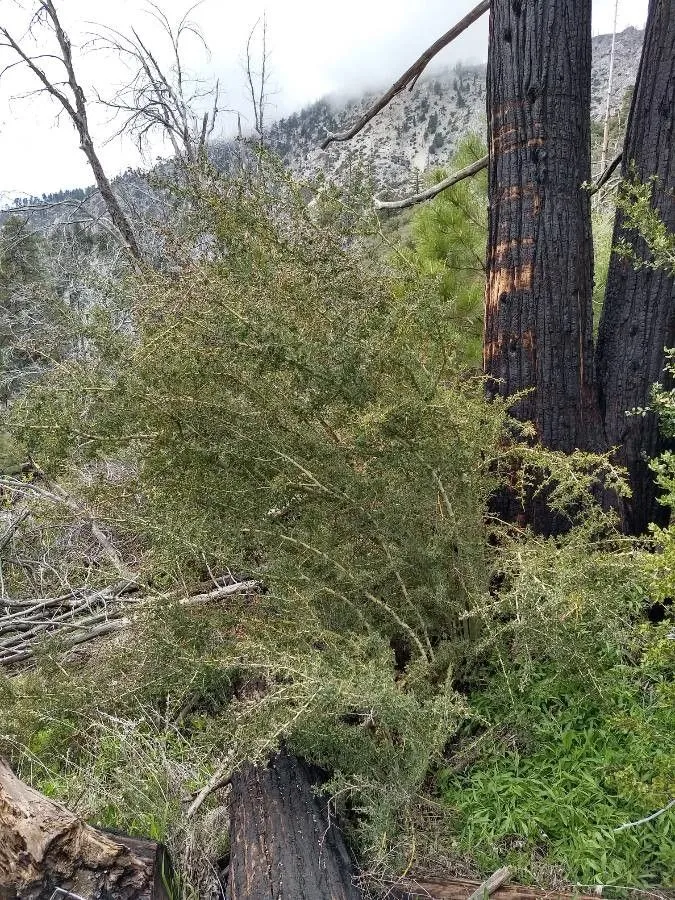
Author: Hook. & Arn.
Bibliography: Bot. Beechey Voy.: 329 (1838)
Year: 1838
Status: accepted
Rank: species
Genus: Ceanothus
Vegetable: False
Observations: W. U.S.A. to New Mexico
Deerbrush ceanothus, scientifically known as Ceanothus integerrimus, is a notable member of the Rhamnaceae family. First recorded in the botanical literature “Bot. Beechey Voy.” in 1838 by botanists Hooker and Arnott, this species has since captured the interest of both horticulturists and environmentalists.
This deciduous shrub is native to the western regions of the United States, stretching as far east as New Mexico. It thrives in diverse habitats, including the sunny, open woodlands and forested areas of California, Oregon, and Nevada. Deerbrush ceanothus is particularly accustomed to the chaparral and foothill regions, where it plays a critical role in the local ecosystem.
The plant is well-regarded for its ornamental appeal and ecological benefits. It features long, arching branches adorned with slender, glossy green leaves. In the spring and early summer months, Deerbrush ceanothus bursts into a splendid display of fragrant flowers. These blossoms, ranging from white to pale blue, form dense, rounded clusters that attract a variety of pollinators, including bees and butterflies.
In addition to its aesthetic beauty, Ceanothus integerrimus is valued for its practical uses. It is known for its nitrogen-fixing properties, which improve soil fertility and benefit neighboring plant species. The shrub’s resilience to drought conditions also makes it a valuable plant for xeriscaping and restoration projects in arid and fire-prone areas.
Historically, indigenous peoples have utilized parts of the Deerbrush ceanothus for various purposes. The plant’s flowers and leaves have been used in traditional medicine to treat ailments, while its strong, flexible branches have served as material for crafting tools and everyday items.
In summary, Deerbrush ceanothus (Ceanothus integerrimus) is a versatile and ecologically significant shrub with a rich history and a bright future in both natural and cultivated landscapes. Its contributions to pollinator support, soil health, and traditional practices underscore its importance in the regions where it thrives.
Eng: deerbrush, deerbrush ceanothus
En: Deerbrush ceanothus, California lilac, Wild Lilac, Deerbrush
Taken Aug 1, 1995 by Daniel Barthelemy (cc-by-nc)
Taken Aug 1, 1995 by Daniel Barthelemy (cc-by-nc)
Taken Aug 1, 1995 by Daniel Barthelemy (cc-by-nc)
Taken May 24, 2019 by WoodDude (cc-by-sa)
Taken May 24, 2019 by WoodDude (cc-by-sa)
Taken May 24, 2019 by WoodDude (cc-by-sa)
Taken May 24, 2019 by WoodDude (cc-by-sa)
© copyright of the Board of Trustees of the Royal Botanic Gardens, Kew.
Growth form>: Multiple Stem
Growth habit>: Shrub
Growth rate>: Moderate
Ph maximum: 8.5
Ph minimum: 7.1
Family: Myrtaceae Author: (F.Muell.) K.D.Hill & L.A.S.Johnson Bibliography: Telopea 6: 402 (1995) Year: 1995 Status:…
Family: Rubiaceae Author: Pierre ex A.Froehner Bibliography: Notizbl. Bot. Gart. Berlin-Dahlem 1: 237 (1897) Year:…
Family: Sapindaceae Author: Koidz. Bibliography: J. Coll. Sci. Imp. Univ. Tokyo 32(1): 38 (1911) Year:…
Family: Asteraceae Author: A.Gray Bibliography: Pacif. Railr. Rep.: 107 (1857) Year: 1857 Status: accepted Rank:…
Family: Fabaceae Author: Medik. Bibliography: Vorles. Churpfälz. Phys.-Ökon. Ges. 2: 398 (1787) Year: 1787 Status:…
Family: Aspleniaceae Author: (Cav.) Alston Bibliography: Bull. Misc. Inform. Kew 1932: 309 (1932) Year: 1932…